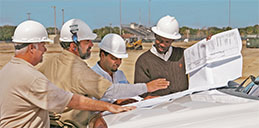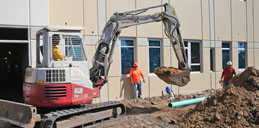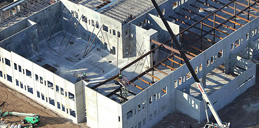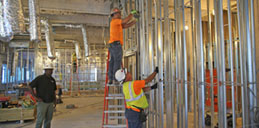3 Rising Tech Trends Shaping the Construction Industry
Technology is playing a major role in society. Whether you are buying a new car, refrigerator, or even a new piece of furniture, chances are its development was influenced by technology. And when used constructively, technology has the power to improve our lives. Perhaps the best examples are these 3 rising tech trends in the construction industry that are giving contractors the tools to build smarter, faster and safer than ever before.
Modular Construction
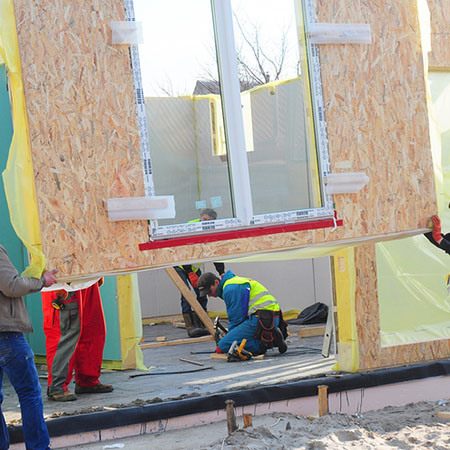 One of the biggest trends on construction sites today is modular construction. Rather than constructing an entire building on the job site, it is prefabricated in a factory. The fabricated sections are then delivered to the construction site and assembled. Modular construction not only cuts down the construction cost, it also reduces the amount of time it takes to complete a project. And a project is less likely to be delayed due to weather, material or labor shortages. And unlike stick-built construction, modular buildings can be designed to be relocatable facilities such as a sales center, health clinic, pop-up retail store or any other use.
One of the biggest trends on construction sites today is modular construction. Rather than constructing an entire building on the job site, it is prefabricated in a factory. The fabricated sections are then delivered to the construction site and assembled. Modular construction not only cuts down the construction cost, it also reduces the amount of time it takes to complete a project. And a project is less likely to be delayed due to weather, material or labor shortages. And unlike stick-built construction, modular buildings can be designed to be relocatable facilities such as a sales center, health clinic, pop-up retail store or any other use.
Multi-story residential and office buildings, manufacturing plants, schools and other types of modular buildings can be constructed in approximately half the time and at a lower cost. Recently, a charter middle school in Los Angeles was awarded First Place in the Modular Building Institute Awards of Distinction for architectural excellence. The three-story building comprises of more than 27,000 square feet of space for classrooms, restrooms, stairs and elevator.
Robotics/Autonomous Equipment
Just like technology is the driving force behind self-driving cars and other autonomous vehicles, similar technology is being adapted for use on construction sites. Robotic equipment and autonomous construction vehicles are helping contractors improve safety on construction sites. Industrial robotics and artificial intelligence technology can do the work that would normally require several construction workers to complete. This technology is also enabling construction companies to overcome the costs and logistical challenges they often face in difficult labor markets. So, what can these autonomous robots do? Just about anything a human can do. They are laying bricks, paving roads, painting walls, excavating, drilling and doing all sorts of repetitive tasks. In 2016, a 2,600 square foot facility in Dubai became the world’s first 3D printed office building. With the increased development of 3-D technology and robotics, print on demand construction may be a reality in the future.
Smarter Green Buildings
 The development of smarter green buildings in the U.S. and around the world is reaching greater heights. It is expected that more than 60% of construction projects will comprise of green buildings by 2021, according to the World Green Building Trends 2018 SmartMarket Report. And for the first time, its client demands not environmental regulations that is the driving force. Advancements in solar power and other green technologies makes it economically feasible. Clients are seeing the results of building green with a higher return on investment.
The development of smarter green buildings in the U.S. and around the world is reaching greater heights. It is expected that more than 60% of construction projects will comprise of green buildings by 2021, according to the World Green Building Trends 2018 SmartMarket Report. And for the first time, its client demands not environmental regulations that is the driving force. Advancements in solar power and other green technologies makes it economically feasible. Clients are seeing the results of building green with a higher return on investment.
In the last three years alone, LEED-certified buildings in the U.S. have saved over $2 Billion in energy, water, waste and maintenance costs. The Tower at PNC Plaza is an award-winning LEED Platinum building that is setting the standard for smarter green buildings. Its unique breathable skin and energy-saving technology illustrates that there are no limits to what can be created. Technology from smart electric meters and LED lighting to Internet of Things (IoT) devices are shaping the commercial construction industry today, tomorrow and beyond.


